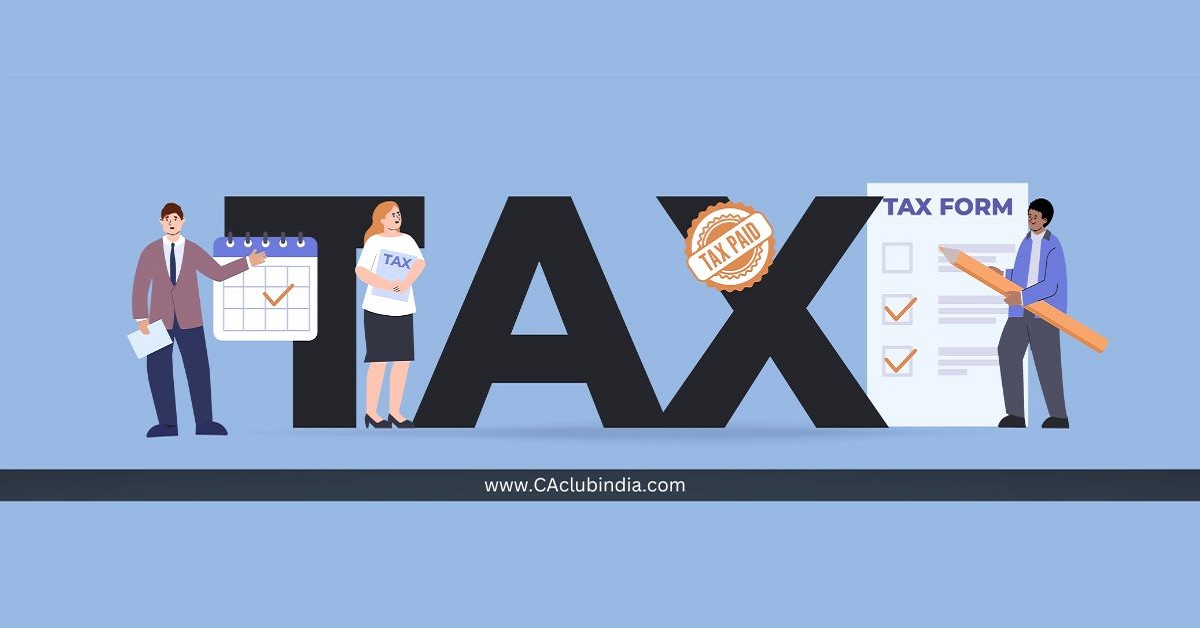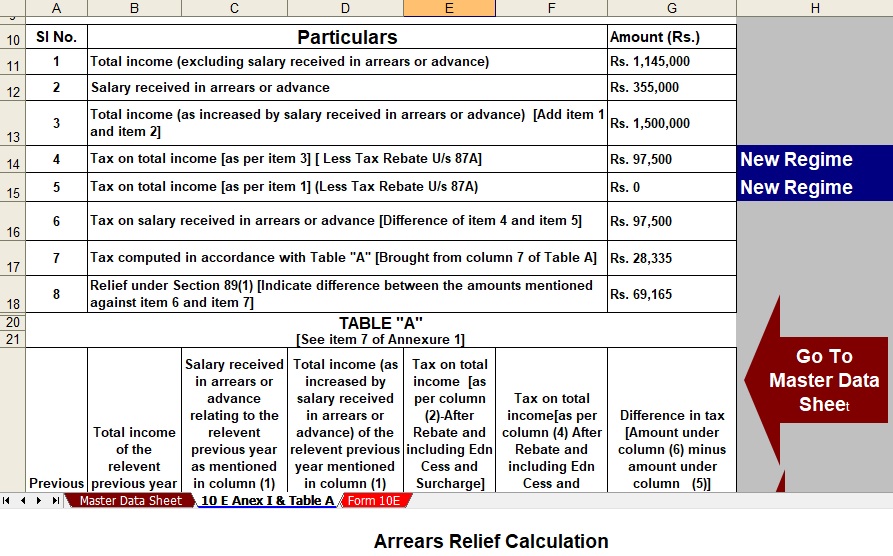As the Income Tax Act 2025 continues to evolve, taxpayers in India face a crucial choice - whether to follow the Old Tax Regime or transition to the New Tax Regime. Both systems aim to simplify taxation and promote financial transparency; however, they differ significantly in their approaches to deductions, exemptions, and tax slab rates.
In this detailed guide, you will clearly understand how the two regimes work, their advantages, drawbacks, and how to choose the one that maximises your savings.

Table of Contents
|
Sr# |
Headings |
|
1 |
Introduction to Tax Regimes in India |
|
2 |
Difference Between Old and New Tax Regimes |
|
3 |
Income Tax Slabs under the Old Regime (FY 2025-26) |
|
4 |
Income Tax Slabs under the New Regime (FY 2025-26) |
|
5 |
Key Deductions under the Old Regime |
|
6 |
Benefits of the New Tax Regime |
|
7 |
Which Regime Should You Choose? |
|
8 |
Step-by-Step Method to Compare Both Regimes |
|
9 |
Examples of Tax Calculation under Both Regimes |
|
10 |
Important Points for FY 2025-26 |
|
11 |
Understanding Section 80C under the Old Tax Regime |
|
12 |
Common Mistakes Taxpayers Make While Choosing |
|
13 |
Tips to Maximise Savings under Both Regimes |
|
14 |
Conclusion |
|
15 |
FAQs |
1. Introduction to Tax Regimes in India
The Indian Income Tax system now provides two clear options - the Old Regime and the New Regime. While the Old Regime emphasises deductions and exemptions, the New Regime emphasises simplicity and lower tax rates.
Furthermore, under the Income Tax Act 2025, you can switch regimes every financial year based on your goals. This flexibility ensures that taxpayers can choose what benefits them the most each year.
Therefore, understanding both regimes in detail becomes crucial before making a decision.
2. Difference Between Old and New Tax Regimes
To put it simply, the Old Tax Regime rewards disciplined savers, while the New Regime favours those who prefer simplicity.
|
Particulars |
Old Tax Regime |
New Tax Regime (FY 2025-26) |
|
Tax Rates |
Higher |
Lower |
|
Deductions/Exemptions |
Many (80C, 80D, HRA, etc.) |
Very few (Standard Deduction Rs 75,000) |
|
Complexity |
High |
Low |
|
Best for |
High-income, investment-oriented individuals |
Salaried employees seeking simplicity |
|
Flexibility |
Can switch annually |
Default regime from FY 2025-26 |
In short, the Old Regime is for investors; the New Regime is for simplifiers.
3. Income Tax Slabs under the Old Regime (FY 2025-26)
Under the Old Regime, tax liability depends on your age and net taxable income after deductions. Moreover, it encourages long-term investments and disciplined financial planning.
|
Income Range (Rs ) |
Below 60 years |
Senior Citizens (60-80 years) |
Above 80 years |
|
Up to Rs 2,50,000 |
Nil |
Nil |
Nil |
|
Rs 2,50,001 - Rs 5,00,000 |
5% |
5% |
Nil |
|
Rs 5,00,001 - Rs 10,00,000 |
20% |
20% |
20% |
|
Above Rs 10,00,000 |
30% |
30% |
30% |
Additionally, taxpayers can enjoy a rebate under Section 87A up to Rs 12,500 if their total income does not exceed Rs 5 lakh.
4. Income Tax Slabs under the New Regime (FY 2025-26)
As per Budget 2025, the New Regime introduces simplified slabs applicable to all age groups equally, promoting fairness and clarity.
|
Income Range (Rs ) |
Tax Rate |
|
Up to Rs 3,00,000 |
Nil |
|
Rs 3,00,001 - Rs 6,00,000 |
5% |
|
Rs 6,00,001 - Rs 9,00,000 |
10% |
|
Rs 9,00,001 - Rs 12,00,000 |
15% |
|
Rs 12,00,001 - Rs 15,00,000 |
20% |
|
Above Rs 15,00,000 |
30% |
Moreover, under Section 87A, the rebate limit has increased to Rs 25,000, making income up to Rs 7 lakh completely tax-free.
5. Key Deductions under the Old Regime
Although the Old Regime carries higher tax rates, it compensates with numerous deductions. These deductions not only reduce taxable income but also promote financial discipline.
Popular Deductions Include:
- Section 80C: Investments in LIC, PPF, ELSS, NSC, and tuition fees (up to Rs 1.5 lakh).
- Section 80D: Medical insurance premiums for self and family.
- Section 24(b): Interest on home loans up to Rs 2 lakh.
- HRA & LTA: Exemptions for rent and travel expenses.
- Standard Deduction: Rs 50,000 for salaried employees.
Therefore, taxpayers who plan their finances effectively benefit greatly under this regime.
6. Benefits of the New Tax Regime
The New Tax Regime, on the other hand, removes the complexity of claiming deductions. Instead, it rewards straightforward earnings and lowers tax rates.
Key Benefits Include
- Lower tax rates across income brackets.
- Automatic standard deduction of Rs 75,000.
- Minimal paperwork and faster filing.
- Annual flexibility to switch regimes for salaried individuals.
Thus, this regime is ideal for those who value simplicity and convenience.
7. Which Regime Should You Choose?
Choosing the right regime can optimise your savings and help you stay financially efficient.
If you invest heavily in instruments like PPF, NPS, or insurance, the Old Regime may work best. Conversely, if you prefer simplicity with no investment planning hassles, the New Regime will suit you better.
Tip: Use an Automatic Income Tax Calculator in Excel for FY 2025-26 to compare your tax under both regimes quickly.
8. Step-by-Step Method to Compare Both Regimes
To make an informed decision, follow these simple steps:
- Calculate your gross annual income.
- Deduct exemptions (like HRA, LTA, etc.) under the Old Regime.
- Subtract deductions under Chapter VI-A (80C, 80D, etc.).
- Determine taxable income under the Old Regime.
- Apply slab rates of the New Regime.
- Compare both final tax liabilities.
- Choose the regime with the lower tax payable.
Consequently, this process helps ensure that your choice is backed by numbers, not guesswork.
9. Examples of Tax Calculation under Both Regimes
Let's look at a simple comparison example:
|
Details |
Old Regime |
New Regime |
|
Gross Salary |
Rs 10,00,000 |
Rs 10,00,000 |
|
Deductions (80C, 80D, etc.) |
Rs 2,00,000 |
N/A |
|
Taxable Income |
Rs 8,00,000 |
Rs 10,00,000 |
|
Tax Payable |
Rs 62,500 |
Rs 60,000 |
Hence, while both regimes may seem similar in this case, the better choice depends on your investment habits.
10. Important Points for FY 2025-26
- The New Regime is the default for FY 2025-26.
- You can opt out and choose the Old Regime if desired.
- Form 10E remains mandatory for claiming arrears relief under Section 89(1).
- Using Automatic Excel-based Tax Software ensures accurate and error-free computation.
Thus, staying updated with Budget 2025 rules helps you avoid last-minute confusion.
11. Understanding Section 80C under the Old Tax Regime
Section 80C remains one of the strongest pillars of tax planning in the Old Regime. It allows deductions up to Rs 1.5 lakh for certain investments and payments.
Eligible Investments under Section 80C
- Public Provident Fund (PPF) - safe and government-backed.
- Employees' Provident Fund (EPF) - ideal for salaried individuals.
- National Savings Certificate (NSC) - provides fixed returns.
- Equity Linked Savings Scheme (ELSS) - for higher returns.
- Life Insurance Premiums - for self, spouse, or children.
- Home Loan Principal Repayment - claimable under 80C.
In other words, Section 80C motivates you to save while reducing your tax burden.
12. Common Mistakes Taxpayers Make While Choosing
Many taxpayers choose regimes without proper comparison. Often, they:
- Forget to calculate their actual deductions.
- Assume lower rates always mean less tax.
- Ignore Form 10E
- Fail to update tax-saving investments
By avoiding these errors, you can save both time and money during tax season.
13. Tips to Maximise Savings under Both Regimes
Here's how to make the most of whichever regime you choose:
If You Choose the Old Regime
- Invest early in PPF, ELSS, and NPS.
- Claim all possible deductions before March.
- Maintain records for HRA, LTA, and insurance.
If You Choose the New Regime
- Focus on income growth rather than deductions.
- Utilise automatic Excel tax calculators to verify savings.
- Review your income structure each year before opting.
Therefore, smart planning ensures maximum benefits under any regime.
14. Conclusion
To sum up, both the Old and New Tax Regimes, as per Budget 2025, have their own strengths. While one emphasises tax-saving investments, the other prioritises simplicity and convenience.
Your choice should depend on your income, lifestyle, and financial goals. Remember, tax planning isn't about paying less; it's about planning smartly to retain more of your earnings.
15. Frequently Asked Questions (FAQs)
Q1. Which tax regime is better for FY 2025-26?
If you make regular investments, the Old Regime might save you more tax. However, for simple filings, the New Regime is ideal.
Q2. Is the New Tax Regime mandatory as per the Budget 2025?
No. Although it's the default option, you can opt for the Old Regime while filing returns.
Q3. Can I switch regimes every year?
Yes, salaried individuals can switch annually. However, business owners can do so only once.
Q4. Does the New Regime allow a standard deduction?
Yes, Budget 2025 raised the standard deduction to Rs 75,000 for all salaried taxpayers.
Q5. How can I compare my tax liability easily?
You can use Automatic Income Tax Preparation Software in Excel to calculate, compare, and choose your regime accurately.
13. Understanding Form 10E for Relief under Section 89(1)
Sometimes, taxpayers receive salary arrears or advance payments, which can increase their taxable income for a given year. To avoid higher tax, the Income Tax Act 2025 provides relief under Section 89(1).
To claim this benefit, you must file Form 10E online before filing your Income Tax Return (ITR).
Key Points About Form 10E
- It calculates tax relief on arrears or advance salary
- Must be submitted through the Income Tax e-filing portal
- Applies to both Government and Non-Government employees
- Required if you're claiming relief under Section 89(1)
Example: If your company pays arrears for FY 2023-24 in FY 2025-26, you can compute the additional tax burden using the Automatic Arrears Relief Calculator U/s 89(1) in Excel and claim relief using Form 10E.
14. How Automatic Income Tax Preparation Software in Excel Simplifies Filing
In the modern era of digital tax compliance, Automatic Income Tax Preparation Software All-in-One in Excel for FY 2025-26 has become a must-have tool for salaried taxpayers.
Features of the Automatic Excel Tax Software
- Pre-built formulas to calculate income tax under both regimes
- Form 10E and Form 16 generation in Excel
- Auto calculation of Section 80C, 80D, HRA, and arrears relief
- Separate options for Govt. and Non-Govt. employees
- Printable summary sheets for submission to the employer
Advantage:Using such a tool ensures accuracy, transparency, and zero manual errors, helping taxpayers comply with the Income Tax Act 2025 quickly.
15. Comparing Old vs. New Regimes Using Excel Software
To make an informed decision, it's always better to compare both regimes using an Automatic Excel Calculator.
Here's a simple process:
- Download the Excel Tax Software designed for FY 2025-26.
- Enter your gross salary, allowances, and deductions.
- The sheet will automatically compute tax under both Old and New Regimes.
- Review the tax difference and select the regime with the lower liability.
- Save or print the file for record-keeping and submission.
Such digital tools make tax filing faster, more efficient, and 100% compliant with current regulations.
16. Benefits of Using Form 10E with Excel-Based Tax Software

Combining Form 10E with Automatic Excel Tax Software gives you full control over your tax management.
Benefits include:
- Accurate calculation of arrears relief
- Seamless integration with ITR forms
- No risk of missing tax relief claims
- Automatic verification of income distribution across years
This method not only ensures legal compliance but also maximises your refund potential.
17. How to Switch Between Old and New Tax Regimes
The Income Tax Act 2025 empowers taxpayers to switch between the Old and New Regimes according to their financial goals. However, this flexibility requires careful planning and timely decisions.
Here's how the process works effectively:
- Salaried Employees can change their regime every financial year while filing the Income Tax Return (ITR).
- Business Professionals, on the other hand, must choose wisely, since switching back later is restricted.
- The New Regime, moreover, automatically applies by default unless you opt out by selecting the Old Regime in your return form.
Therefore, every taxpayer should review both regimes carefully before submission. Additionally, use the "Compare Regimes" option available in Automatic Excel-based Income Tax Calculators to make the right decision for FY 2025-26. Consequently, this comparison ensures you maximise savings, avoid errors, and maintain compliance effortlessly.
18. How the New Regime Promotes Transparency
The Government of India introduced the New Tax Regime to simplify compliance and reduce dependence on complex, investment-linked deductions. Furthermore, it aims to make the tax structure cleaner, faster, and more transparent.
Key Benefits Include
- It encourages voluntary compliance, ensuring taxpayers file honestly.
- It reduces paperwork, minimises audit burdens, and simplifies assessment procedures.
- It promotes transparent filing and clear financial reporting.
- It simplifies tax planning for both salaried and self-employed individuals.
Therefore, by adopting the New Regime, taxpayers can focus more on income growth rather than worrying about claiming multiple deductions. Ultimately, this regime builds trust, enhances transparency, and encourages honest participation in India's tax system.
19. Strategic Tax Planning for FY 2025-26
Taxpayers must continue planning strategically under both regimes. However, the strategy varies depending on which system you choose.
Here's how you can plan efficiently:
- Under the Old Regime, you should prioritise tax-saving investments like PPF, ELSS, NPS, and Life Insurance.
- Under the New Regime, you should emphasise cash flow management and risk diversification rather than deductions.
- You should also utilise Automatic Income Tax Preparation Software in Excel to analyse multiple scenarios instantly.
Moreover, effective planning leads to optimised savings and better long-term wealth creation. Therefore, plan early, review both options, and select the one that aligns best with your financial aspirations. Consequently, this ensures both compliance and financial stability throughout the financial year.
20. Key Takeaways from the Income Tax Act 2025
- The New Tax Regime now serves as the default system, ensuring simplicity for all taxpayers.
- You can choose between regimes each financial year, depending on your preference.
- Form 10E is mandatory for claiming arrears relief under Section 89(1).
- Section 80C and related deductions apply only under the Old Regime.
- Automatic Excel Software helps simplify tax comparison and computation effectively.
Additionally, by keeping these key takeaways in mind, taxpayers can make informed decisions, reduce liabilities, and stay compliant with the latest provisions. Moreover, regular review and the use of digital tax tools can prevent last-minute filing errors. Therefore, staying updated ensures you benefit from every available provision under the Income Tax Act 2025.
21. Final Thoughts
The Old and New Tax Regimes under the Income Tax Act 2025 empower taxpayers with both flexibility and choice. While the Old Regime encourages savings and long-term investments, the New Regime offers a simpler, cleaner, and transparent structure.
Using Automatic Income Tax Preparation Software in Excel with Form 10E ensures that every taxpayer, whether Government or Non-Government, can file taxes accurately, efficiently, and confidently.
Moreover, the right regime always depends on your income level, investment habits, and future goals. Therefore, you should choose wisely, plan early, and let technology simplify your tax journey. Finally, by embracing automation and awareness, you can enhance accuracy, maximise savings, and achieve long-term financial peace of mind.
23. Additional FAQs on Tax Regimes 2025
Q6. What is the default tax regime in FY 2025-26?
The New Tax Regime acts as the default option under Budget 2025. However, you can opt for the Old Regime if you wish to claim deductions and exemptions.
Q7. Is Form 10E required every year?
You must file Form 10E only if you receive salary arrears or advance payments during a financial year. Otherwise, it's not required.
Q8. What is the maximum rebate under the New Regime?
Under Section 87A, you can claim a rebate up to Rs 25,000, thereby making your income up to Rs 7 lakh tax-free. Consequently, most middle-income taxpayers benefit significantly.
Q9. Can I use Excel software for both Govt. and Non-Govt. employees?
Yes, modern Automatic Income Tax Software All-in-One in Excel supports both employee categories and offers tailored calculation features. Moreover, it ensures accuracy and compliance for all.
Q10. Where can I download the latest version of the Excel Tax Calculator?
You can download the updated version for FY 2025-26 from trusted online portals or authorised tax solution providers. Additionally, these tools integrate automatically with the latest tax slab updates for maximum accuracy.
Conclusion
In conclusion, the Old and New Tax Regimes under the Income Tax Act 2025 offer flexibility, transparency, and control to every taxpayer. The Old Regime rewards disciplined investors, whereas the New Regime simplifies taxation for those seeking ease and clarity.
Before filing your return for FY 2025-26, analyse your financial situation carefully. Additionally, use Automatic Excel Tax Calculators designed for both Government and Non-Government Employees to ensure accuracy and compliance. Therefore, by planning ahead and comparing options, you can maximise your tax savings, reduce your liabilities, and achieve lasting financial peace of mind.








 CAclubindia
CAclubindia

